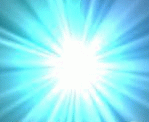
(Superhump light curve by the VSNET SW UMa collaboration team: Makoto Uemura, Taichi Kato, Brian Martin, Rudolf Novak, Denis Buczynski, Lew Cook, Elena Pavlenko, Sergei Shugarov, Nataly Katisheva, Gianluca Masi, Alessia Cassetti, Kohji Yoshikawa)


(Superhump light curve by the VSNET SW UMa collaboration team: Makoto Uemura,
Taichi Kato, Brian Martin, Rudolf Novak, Denis Buczynski, Lew Cook,
Elena Pavlenko, Sergei Shugarov, Nataly Katisheva, Gianluca Masi,
Alessia Cassetti, Kohji Yoshikawa)

(Superhump light curve by the VSNET SW UMa collaboration team)

(Regrowth of superhumps on Feb. 27, observation by the Kyoto team and
Rudolf Novak)

(Prominent superhumps and super(?)-QPOs seen during the final decline)
Dear colleagues,
SW UMa is entering outburst: UMASW 000211.927 15.0 KNN UMASW 000211.953 14.2 KNN (RX J0909.8+1849 was detected at 14.2)Regards,
Positive observations of SW UMa
Mr C. P. Jones Laindon, Essex, UK. AAVSO ID: JCN Email: cpj@cix.co.uk Instrument: 457mm f/4 Newtonian + 150mm and 75mm masks. Visual Observations for 11 February 2000. 11 Feb Transparent. Star UT Mag Seq Comments ---------------------------------------------------------------------- UMASW 000211.9257 14.1 JCN BAA Outburst! UMASW 000211.9549 14.1 JCN BAA ---------------------------------------------------------------------- Chris J
Visual magnitude estimates by P. Schmeer, Bischmisheim, Germany:
SW URSAE MAJORIS (UGSU)
Feb. 11.23 UT, [13.0 ; 11.77 , [13.2 ; 12.028, 12.4 ; 12.062, 12.0 ;
12.085 UT, 11.7
Sequence: AAVSO
Instrument: 203-mm SCT
Going into outburst just between my evening and midnight session - great!
The most recently recorded outburst (a supermaximum) was detected by Gene
Hanson on 1997 Oct. 19.490 UT at mv= 11.1 (cf. vsnet-alert 1269, IAUC 6760).
Regards,
Patrick
SW UMa outburst confirmed
Dear Colleagues,
We have just confirmed the rare outburst of SW UMa. The object has been observed at around mag 11. The present brightness may be indicative that the object is on the premaximum halt (or precursor) to the final rise, or that the present outburst can be either faint superoutburst or a normal outburst. The interval exceeding two years since the latest superoutburst may more prefer the first interpretation. Observations are very strongly encouraged.
Regards,
Taichi Kato and Makoto Uemura
SW UMa: brightening and international campaign
Our CCD observation has confirmed the further ongoing brightening of SW UMa. The object has become 0.4 mag brighter in these 4 hours. This may reflect the final rise to the peak brightness! We presently use 10 sec exposure time in order to resolve possible super-QPOs.
We will undertake an international observing campaign on SW UMa, as we have had a very successful one in DV UMa and IY UMa. Please post timely to vsnet-alert confirmatory observations, new findings, the progress of the outburst and observations. Collaborating observations should be sent (as usual) to uemura@kusastro.kyoto-u.ac.jp.
Regards,
Makoto Uemura and Taichi Kato
SW UMa was rapidly brightening with a rate of 0.6 mag/d during our last night run for 10 hours (some clouds and other target made our light curve sparse). We cannot see superhump and super-QPO in the light curve, but the modulation with the amplitude of 0.05mag is seen.
We are now observing SW UMa with exposure-time of 10s, but the weather is not good, so other site observations are strongly encouraged.
Regards,
Makoto Uemura and Taichi Kato
From last night observation on SW UMa at Kyoto, we detected a modulation with the amplitude of over 0.1mag while fully evolved superhump is still not seen. Compared with the other superoutburst of SU UMa stars, the appearance of the definite superhump is relatively late.
Regards,
Makoto Uemura and Taichi Kato
SW UMa: superhump evolved
In the light curve of SW UMa on Feb. 16 observed at Kyoto, we see the evolution of the superhump whose amplitude varied from about 0.1 mag to 0.2 mag within 10 hours. The following observation by B. Martin showed the 7 superhumps with almost constant amplitude of 0.2 mag. The observations are urged to catch the more evolutional scenario of superhump.
Regards,
Makoto Uemura, Taichi Kato and Brian Martin
 SW UMa main page
SW UMa main page
 Related Short-Period Systems
Related Short-Period Systems
 Return to Daisaku Nogami's page
Return to Daisaku Nogami's page
